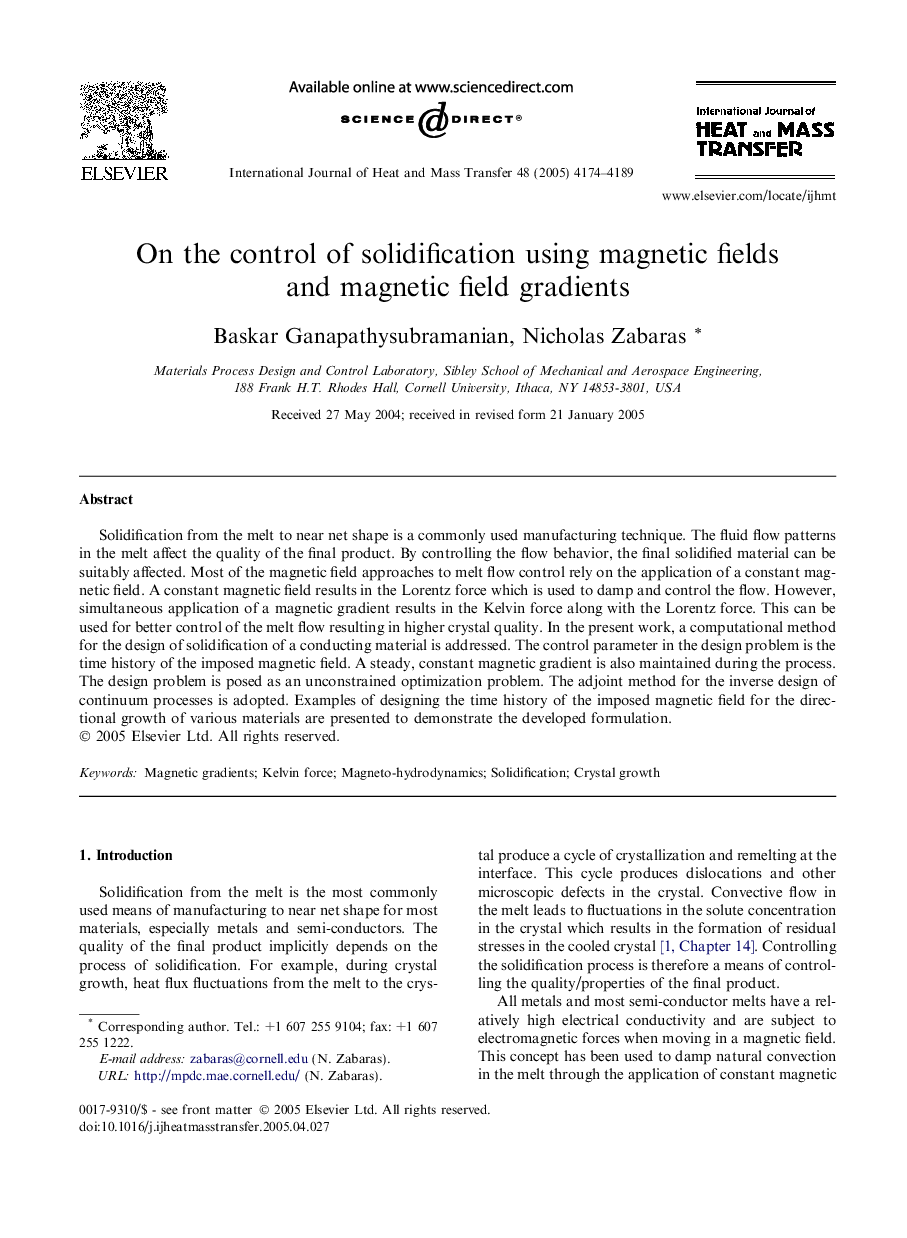| Article ID | Journal | Published Year | Pages | File Type |
|---|---|---|---|---|
| 662949 | International Journal of Heat and Mass Transfer | 2005 | 16 Pages |
Solidification from the melt to near net shape is a commonly used manufacturing technique. The fluid flow patterns in the melt affect the quality of the final product. By controlling the flow behavior, the final solidified material can be suitably affected. Most of the magnetic field approaches to melt flow control rely on the application of a constant magnetic field. A constant magnetic field results in the Lorentz force which is used to damp and control the flow. However, simultaneous application of a magnetic gradient results in the Kelvin force along with the Lorentz force. This can be used for better control of the melt flow resulting in higher crystal quality. In the present work, a computational method for the design of solidification of a conducting material is addressed. The control parameter in the design problem is the time history of the imposed magnetic field. A steady, constant magnetic gradient is also maintained during the process. The design problem is posed as an unconstrained optimization problem. The adjoint method for the inverse design of continuum processes is adopted. Examples of designing the time history of the imposed magnetic field for the directional growth of various materials are presented to demonstrate the developed formulation.
